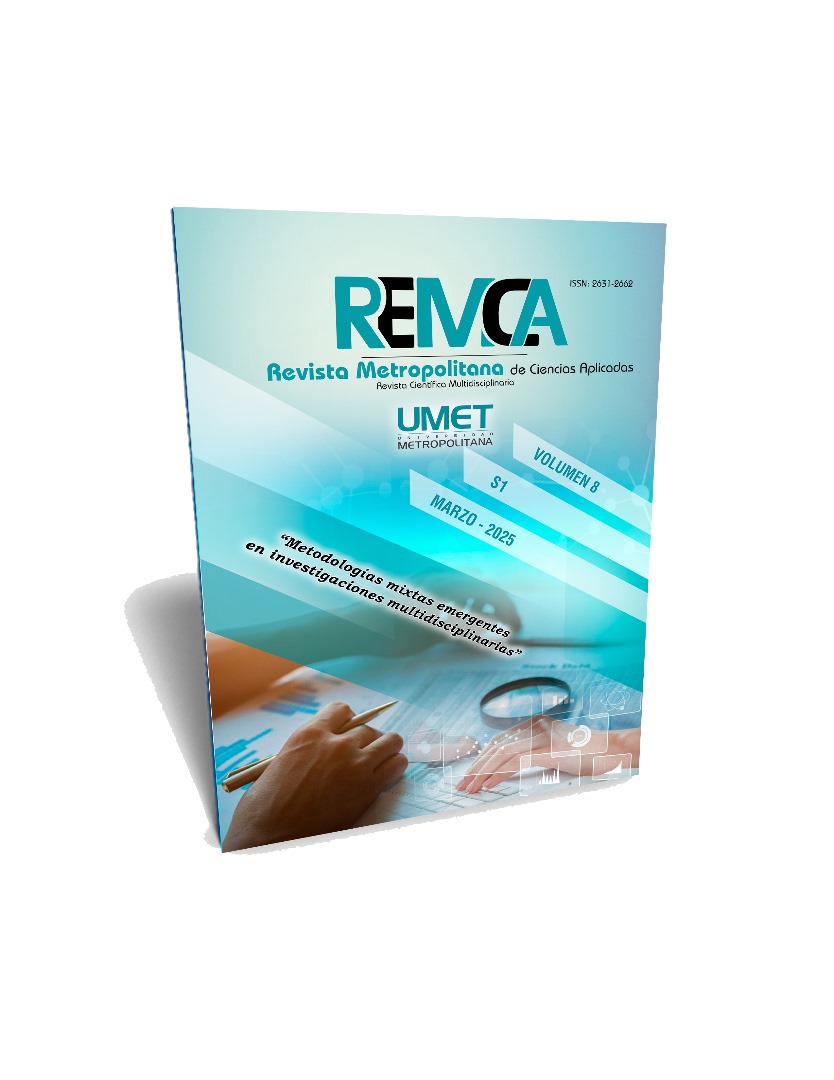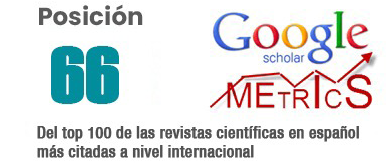Rol del índice cerebroplacentario y doppler de la arteria uterina en el diagnóstico y pronóstico de la restricción del crecimiento fetal
DOI:
https://doi.org/10.62452/9dv1p266Palabras clave:
Restricción del crecimiento fetal, índice cerebroplacentario, doppler de arteria uterina, resultados perinatales, diagnóstico prenatal, pronóstico fetalResumen
El presente estudio tuvo como objetivo evaluar la precisión del índice cerebroplacentario (ICP) y el Doppler de la arteria uterina en la predicción de resultados perinatales adversos en casos de restricción del crecimiento fetal (RCF). Se realizó una revisión bibliográfica de estudios publicados desde 2014, obtenidos de bases de datos como PubMed y EMBASE, centrándose en cohortes y estudios transversales que analizaran la relación entre estos parámetros Doppler y los resultados perinatales. Los resultados mostraron que el ICP tuvo una precisión moderada a alta para predecir la muerte perinatal, con una sensibilidad y especificidad combinadas del 93% y 76%, respectivamente. Sin embargo, su precisión fue baja para otros resultados adversos, como la cesárea de emergencia o la acidosis neonatal. El Doppler de la arteria uterina, por sí solo, detectó menos del 40% de los casos de RCF, pero su combinación con otros parámetros mejoró la precisión predictiva. Se concluye que el ICP y el Doppler de la arteria uterina son herramientas útiles en el diagnóstico y pronóstico de la RCF, aunque se necesitan más estudios para evaluar su impacto en el desarrollo neurológico fetal.
Descargas
Referencias
Conde-Agudelo, A., Villar, J., Kennedy, S. H., & Papageorghiou, A. T. (2018). Predictive accuracy of cerebroplacental ratio for adverse perinatal and neurodevelopmental outcomes in suspected fetal growth restriction: systematic review and meta-analysis. Ultrasound in obstetrics & gynecology: the official journal of the International Society of Ultrasound in Obstetrics and Gynecology, 52(4), 430–441. https://doi.org/10.1002/uog.19117
Figueras, F., Caradeux, J., Crispi, F., Eixarch, E., Peguero, A., & Gratacos, E. (2018). Diagnosis and surveillance of late-onset fetal growth restriction. American journal of obstetrics and gynecology, 218(2S), S790–S802.e1. https://doi.org/10.1016/j.ajog.2017.12.003
Flatley, C., Greer, R. M., & Kumar, S. (2017). Magnitude of change in fetal cerebroplacental ratio in third trimester and risk of adverse pregnancy outcome. Ultrasound in obstetrics & gynecology : the official journal of the International Society of Ultrasound in Obstetrics and Gynecology, 50(4), 514–519. https://doi.org/10.1002/uog.17371
Gordijn, S. J., Beune, I. M., Thilaganathan, B., Papageorghiou, A., Baschat, A. A., Baker, P. N., Silver, R. M., Wynia, K., & Ganzevoort, W. (2016). Consensus definition of fetal growth restriction: a Delphi procedure. Ultrasound in obstetrics & gynecology: the official journal of the International Society of Ultrasound in Obstetrics and Gynecology, 48(3), 333–339. https://doi.org/10.1002/uog.15884
MacDonald, T. M., Hui, L., Robinson, A. J., Dane, K. M., Middleton, A. L., Tong, S., & Walker, S. P. (2019). Cerebral-placental-uterine ratio as novel predictor of late fetal growth restriction: prospective cohort study. Ultrasound in obstetrics & gynecology : the official journal of the International Society of Ultrasound in Obstetrics and Gynecology, 54(3), 367–375. https://doi.org/10.1002/uog.20150
Martins, J. G., Biggio, J. R., & Abuhamad, A. (2020). Society for maternal-fetal medicine consult series# 52: diagnosis and management of fetal growth restriction:(replaces clinical guideline number 3, April 2012). American journal of obstetrics and gynecology, 223(4), B2-B17. https://pubmed.ncbi.nlm.nih.gov/32407785/
McCowan, L. M., Figueras, F., & Anderson, N. H. (2018). Evidence-based national guidelines for the management of suspected fetal growth restriction: comparison, consensus, and controversy. American journal of obstetrics and gynecology, 218(2S), S855–S868. https://doi.org/10.1016/j.ajog.2017.12.004
Pedroso, M. A., Palmer, K. R., Hodges, R. J., Costa, F. D. S., & Rolnik, D. L. (2018). Uterine Artery Doppler in Screening for Preeclampsia and Fetal Growth Restriction. Doppler das artérias uterinas no rastreamento para pré-eclâmpsia e restrição do crescimento fetal. Revista da Federacao Brasileira das Sociedades de Ginecologia e Obstetricia, 40(5), 287–293. https://doi.org/10.1055/s-0038-1660777
Rizzo, G., Mappa, I., Bitsadze, V., Słodki, M., Khizroeva, J., Makatsariya, A., & D'Antonio, F. (2020). Role of Doppler ultrasound at time of diagnosis of late-onset fetal growth restriction in predicting adverse perinatal outcome: prospective cohort study. Ultrasound in obstetrics & gynecology: the official journal of the International Society of Ultrasound in Obstetrics and Gynecology, 55(6), 793–798. https://doi.org/10.1002/uog.20406
Springer, S., Worda, K., Franz, M., Karner, E., Krampl-Bettelheim, E., & Worda, C. (2023). Fetal Growth Restriction Is Associated with Pregnancy Associated Plasma Protein A and Uterine Artery Doppler in First Trimester. Journal of clinical medicine, 12(7), 2502. https://doi.org/10.3390/jcm12072502
Valiño, N., Giunta, G., Gallo, D. M., Akolekar, R., & Nicolaides, K. H. (2016). Uterine artery pulsatility index at 30-34 weeks' gestation in the prediction of adverse perinatal outcome. Ultrasound in obstetrics & gynecology : the official journal of the International Society of Ultrasound in Obstetrics and Gynecology, 47(3), 308–315. https://doi.org/10.1002/uog.14898
Vollgraff Heidweiller-Schreurs, C. A., De Boer, M. A., Heymans, M. W., Schoonmade, L. J., Bossuyt, P. M. M., Mol, B. W. J., De Groot, C. J. M., & Bax, C. J. (2018). Prognostic accuracy of cerebroplacental ratio and middle cerebral artery Doppler for adverse perinatal outcome: systematic review and meta-analysis. Ultrasound in obstetrics & gynecology: the official journal of the International Society of Ultrasound in Obstetrics and Gynecology, 51(3), 313–322. https://doi.org/10.1002/uog.18809
Yu, H., Yuan, M., Wang, L., Li, X., & Jiang, M. (2021). Correlation between Parturients' Uterine Artery Blood Flow Spectra in the First and Second Trimesters of Pregnancy and Fetal Growth Restriction. Journal of healthcare engineering, 2021, 2129201. https://doi.org/10.1155/2021/2129201
Descargas
Publicado
Número
Sección
Licencia
Derechos de autor 2025 Patricio Martin Reyes-Játiva, Esther de los Dolores Jiménez-Andrade, Washington Omar Guevara-Pérez (Autor/a)

Esta obra está bajo una licencia internacional Creative Commons Atribución-NoComercial-CompartirIgual 4.0.
Los autores que publican en la Revista Metropolitana de Ciencias Aplicadas (REMCA), están de acuerdo con los siguientes términos:
1. Derechos de Autor
Los autores conservan los derechos de autor sobre sus trabajos sin restricciones. Los autores otorgan a la revista el derecho de primera publicación. Para ello, ceden a la revista, de forma no exclusiva, los derechos de explotación (reproducción, distribución, comunicación pública y transformación). Los autores pueden establecer otros acuerdos adicionales para la distribución no exclusiva de la versión de la obra publicada en la revista, siempre que exista un reconocimiento de su publicación inicial en esta revista.
© Los autores.
2. Licencia
Los trabajos se publican en la revista bajo la licencia de Atribución-NoComercial-CompartirIgual 4.0 Internacional de Creative Commons (CC BY-NC-SA 4.0). Los términos se pueden consultar en: https://creativecommons.org/licenses/by-nc-sa/4.0/deed.es
Esta licencia permite:
- Compartir: copiar y redistribuir el material en cualquier medio o formato.
- Adaptar: remezclar, transformar y crear a partir del material.
Bajo los siguientes términos:
- Atribución: ha de reconocer la autoría de manera apropiada, proporcionar un enlace a la licencia e indicar si se ha hecho algún cambio. Puede hacerlo de cualquier manera razonable, pero no de forma tal que sugiera que el licenciador le da soporte o patrocina el uso que se hace.
- NoComercial: no puede utilizar el material para finalidades comerciales.
- CompartirIgual: si remezcla, transforma o crea a partir del material, debe difundir su creación con la misma licencia que la obra original.
No hay restricciones adicionales. No puede aplicar términos legales ni medidas tecnológicas que restrinjan legalmente a otros hacer cualquier cosa que la licencia permita.




